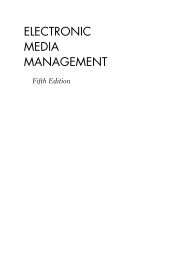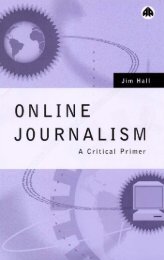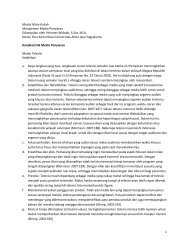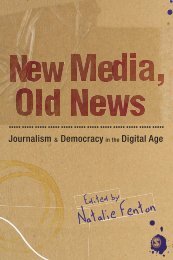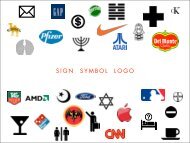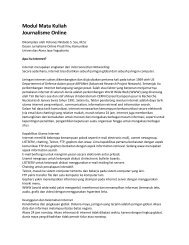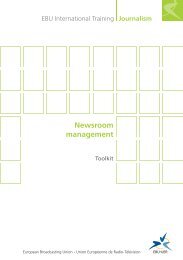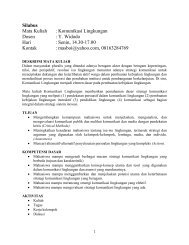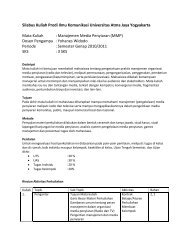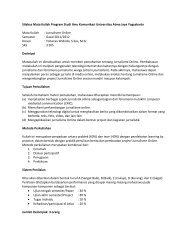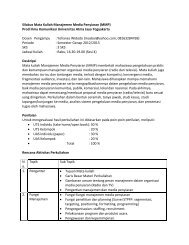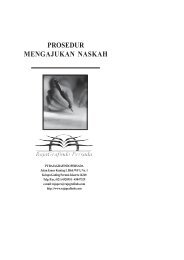1What is online journalism? - Ayo Menulis FISIP UAJY
1What is online journalism? - Ayo Menulis FISIP UAJY
1What is online journalism? - Ayo Menulis FISIP UAJY
Create successful ePaper yourself
Turn your PDF publications into a flip-book with our unique Google optimized e-Paper software.
Design your web resource 195<br />
Metaphor <strong>is</strong> when you use an object or scenario that people are<br />
familiar with as a vessel for your site construction and a vehicle for<br />
navigation. Car dashboards, TV remote controls, houses and the<br />
human body have all been used as metaphors.<br />
Metaphors can put your content together in a way that your<br />
user can instantly relate to, but as David Siegel explains (1997),<br />
they must be well designed:<br />
Metaphors are vehicles of exploration. Make it simple,<br />
cons<strong>is</strong>tent and easy to get around. A good metaphor puts the<br />
light switch where you expect to find it. A bad metaphor<br />
makes you learn a whole new set of commands to enter. Wellexecuted<br />
metaphors make it difficult to get lost.<br />
Metaphors must be not only well designed, but also well conceived.<br />
The problem with metaphors <strong>is</strong> they are usually applied literally. A<br />
site for a car parts company <strong>is</strong> going to use a metaphor linked to the<br />
automobile, not the human body or an art gallery. However, the use<br />
of metaphor and the kind of metaphor should be driven by the<br />
range of content and the structure of the site, not just some literal<br />
association with the subject-matter. Users will relate to the<br />
metaphor in the same way they would relate to its real-life<br />
equivalent. That <strong>is</strong> its whole purpose. An exploratory metaphor<br />
(human body, gallery, etc.) may actually suit the content of the car<br />
parts site better than the static metaphor of the car dashboard. But,<br />
of course, th<strong>is</strong> would also be unsuitable as its literal association<br />
would seem out of place. Who gives to an art gallery to buy a car<br />
part? It’s difficult to get the right combination of suitable literal<br />
association and appropriate framework for content and navigation.<br />
Metaphors – handle with care.<br />
So let’s get back to our essentials. The ‘linkable summary of<br />
where else on the site they can go’ will point users to various<br />
utilities such as ‘Help’ or ‘Checkout’ for e-commerce sites. It will<br />
also l<strong>is</strong>t your content categories, decided at the structuring stage.<br />
Th<strong>is</strong> <strong>is</strong> all part of the ‘pers<strong>is</strong>tent’ navigation that <strong>is</strong> found on every<br />
page.<br />
You can also offer ‘local’ navigation, specific to individual pages.<br />
Th<strong>is</strong> shows what <strong>is</strong> on offer, not across the site, but at the level<br />
your user <strong>is</strong> currently at. Steve Krug (2000) believes a common



